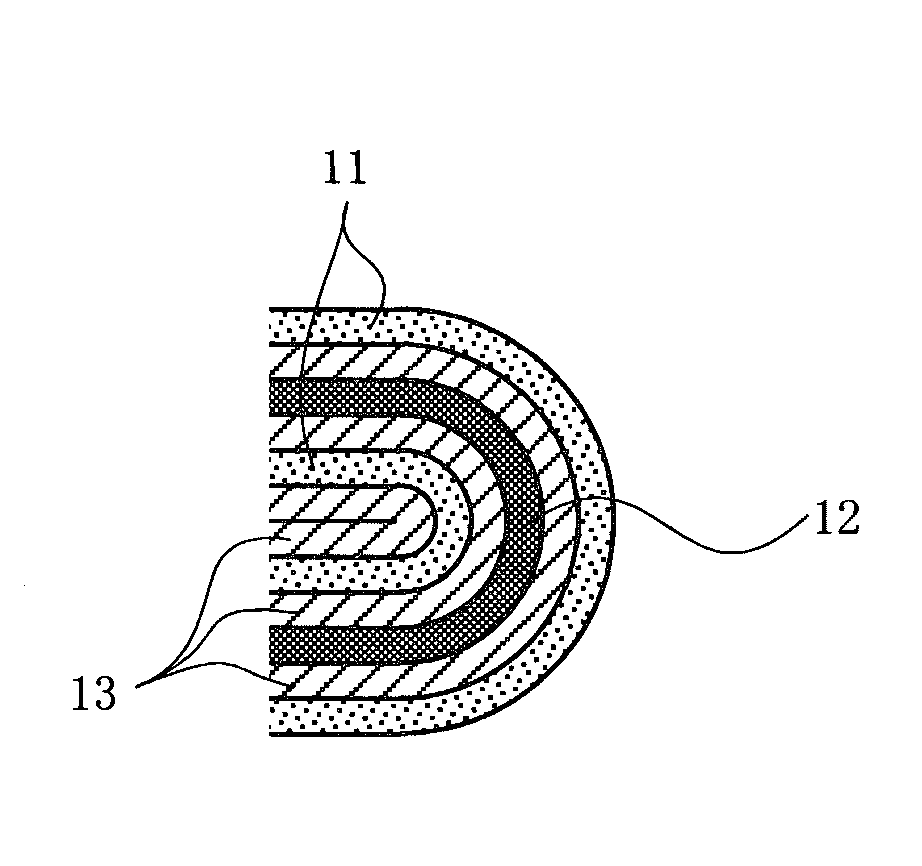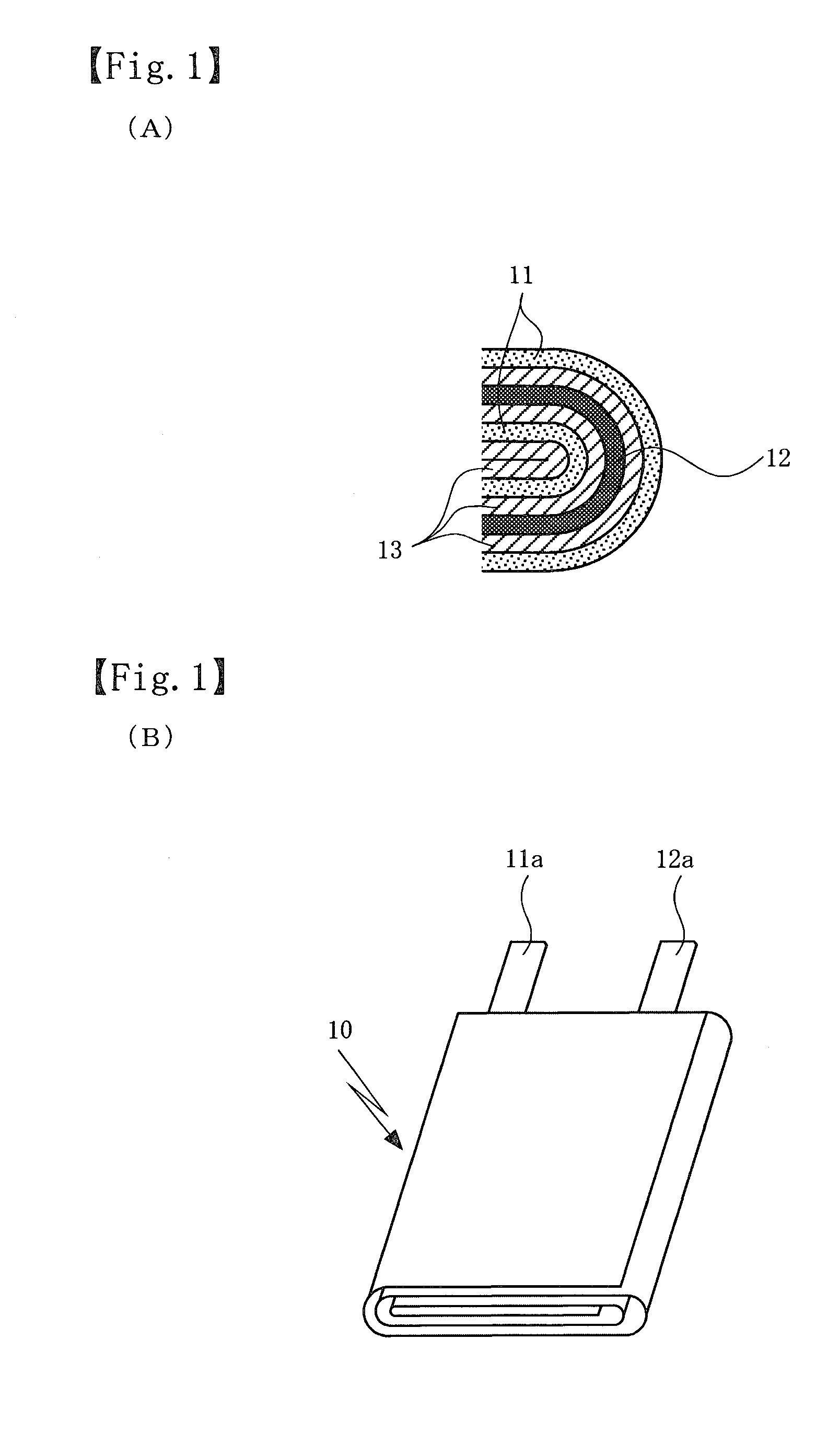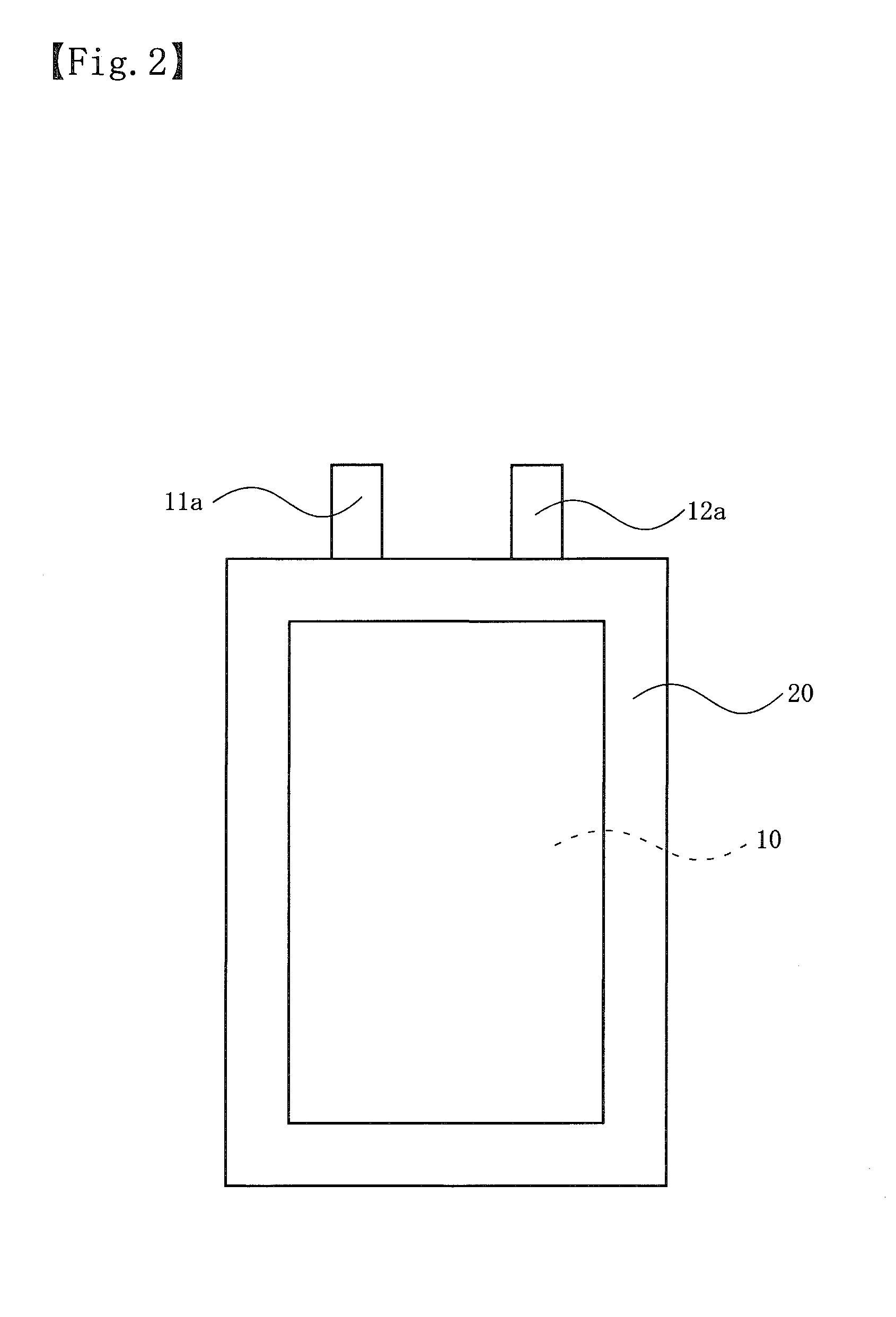Non-aqueous electrolyte secondary battery
a secondary battery and non-aqueous electrolyte technology, applied in the direction of non-aqueous electrolyte cells, cell components, electrochemical generators, etc., can solve the problems of deteriorating the charge-discharge cycle characteristics of a non-aqueous electrolyte secondary battery, the decomposition of non-aqueous electrolyte during charging/discharging, and the difficulty in meeting the above described demands. , to achieve the effect of excellen
- Summary
- Abstract
- Description
- Claims
- Application Information
AI Technical Summary
Benefits of technology
Problems solved by technology
Method used
Image
Examples
example 1
[0045]In Example 1, a non-aqueous electrolyte secondary battery was fabricated using a positive electrode, a negative electrode, and a non-aqueous electrolyte that were prepared in the following manner.
Preparation of Positive Electrode
[0046]A positive electrode was prepared as follows. Li2CO3 and CO3O4 were mixed using Ishikawa-style automated mortar in a manner to provide mol ratio of 1:1 between Li and Co. Then, the resultant mixture were heat-treated at 850° C. for 20 hours and pulverized to obtain lithium-cobalt multiple oxide of LiCoO2 as a positive electrode active material.
[0047]Then, the positive electrode active material, carbon as a conductive agent, and polyvinylidene fluoride as a binder were mixed at weight ratio of 95:2.5:2.5, and further, N-methyl-2-pyrrolidone as dispersion medium was admixed to prepare positive electrode mixture slurry.
[0048]Next, the positive electrode mixture slurry was applied to both sides of a positive electrode current collector made of alumin...
example 2
[0056]In Example 2, the same procedure as in Example 1 was used to fabricate a non-aqueous electrolyte secondary battery, except that, instead of 1,3-propane sultone, 2 weight % of sulfolane of the sulfur-containing composite with cyclic structure having sulfonyl group was added to the non-aqueous electrolyte.
example 3
[0057]In Example 3, the same procedure as in Example 1 was used to fabricate a non-aqueous electrolyte secondary battery, except that, instead of 1,3-propane sultone, 2 weight % of 1,3-propene sultone of the sulfur-containing composite with cyclic structure having sulfonyl group was added to the non-aqueous electrolyte.
PUM
| Property | Measurement | Unit |
|---|---|---|
| size | aaaaa | aaaaa |
| filling density | aaaaa | aaaaa |
| crystal particle size | aaaaa | aaaaa |
Abstract
Description
Claims
Application Information
 Login to View More
Login to View More - R&D
- Intellectual Property
- Life Sciences
- Materials
- Tech Scout
- Unparalleled Data Quality
- Higher Quality Content
- 60% Fewer Hallucinations
Browse by: Latest US Patents, China's latest patents, Technical Efficacy Thesaurus, Application Domain, Technology Topic, Popular Technical Reports.
© 2025 PatSnap. All rights reserved.Legal|Privacy policy|Modern Slavery Act Transparency Statement|Sitemap|About US| Contact US: help@patsnap.com



